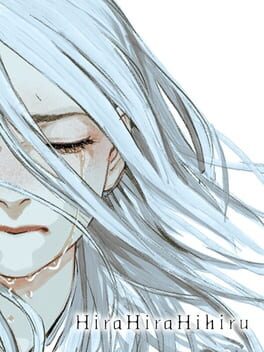I'll begin by stating that the writing is really dense. The main theme and story aim to represent how psychiatric disorders are perceived and experienced by the unaffected population. The hihiru's illness quickly turns them into repellent subjects: their internal and external organs, including sensory ones, decompose year after year; their intellectual faculties suffer, the nervous system itself is affected and deteriorates over time, and they gradually experience more visual and auditory hallucinations, leading to exacerbating certain violent behaviors and moments of crisis. In this case, there is a parallel with the Japanese (and, to be honest, global) story when it comes to the treatment of psychiatric subjects: they are discriminated against, isolated, and often their families confine them in specially built cages within their homes (on this topic, you can read a paper by Yumi Kim from 2018).
The story is experienced through the perspective of a few characters: a practicing doctor within a facility that takes care of these subjects, trying to give them a dignified life and necessary treatments, and a student dealing with unexpected situations involving hihiru.
The hihiru are, in fact, a representation of what one would not want to see or deal with. Besides being useful for reflecting on the perception of illnesses (the visual novel also incorporates mysticism and folklore, which the protagonists try to combat through both scientific and compassionate/welcoming approaches), they can also be seen as a representation of all the disadvantaged classes within a broader social fabric: they are routinely exploited in the prostitution market, have no access to proper care (this is also true for members of wealthier families who reject modern medicine), and are perceived as something untreatable. In the scientific world itself, in that Japanese context, there is controversy when it comes to the possibility of treating symptoms and disorders related to immunology, and there is a pessimistic perception of attempting to classify something that does not have a precise definition.
Amidst all this, the sections intertwining the various themes associated with hihiru and the development and presence of the protagonists almost always proceed at an excellent pace: events give the right breathing space to each character and the consequences of almost all actions taken (with a couple of paradoxical exceptions where there is an intention to rush too quickly), thus managing to convey a good sense of realism.
Unfortunately, there are also some chapters filled with mundane situations, certainly useful for delving into the lives and personalities of the protagonists but, in my opinion, are insisted upon too much. In these cases, I had the perception that the rhythm not only slowed down but came to a complete halt. Additionally, while the overall voice acting is very good, the protagonists' voice acting often seems conducted in a very superficial manner; I'm far from being an expert in Japanese dubbing, but many times I noticed very flat and too similar tones in very different situations, even in intense or tragic moments.
The choices that can be made are few, but some of them are very significant; from a narrative point of view, they allow triggering sequences that would otherwise be inaccessible. I gather there are a total of 4 endings
The story is experienced through the perspective of a few characters: a practicing doctor within a facility that takes care of these subjects, trying to give them a dignified life and necessary treatments, and a student dealing with unexpected situations involving hihiru.
The hihiru are, in fact, a representation of what one would not want to see or deal with. Besides being useful for reflecting on the perception of illnesses (the visual novel also incorporates mysticism and folklore, which the protagonists try to combat through both scientific and compassionate/welcoming approaches), they can also be seen as a representation of all the disadvantaged classes within a broader social fabric: they are routinely exploited in the prostitution market, have no access to proper care (this is also true for members of wealthier families who reject modern medicine), and are perceived as something untreatable. In the scientific world itself, in that Japanese context, there is controversy when it comes to the possibility of treating symptoms and disorders related to immunology, and there is a pessimistic perception of attempting to classify something that does not have a precise definition.
Amidst all this, the sections intertwining the various themes associated with hihiru and the development and presence of the protagonists almost always proceed at an excellent pace: events give the right breathing space to each character and the consequences of almost all actions taken (with a couple of paradoxical exceptions where there is an intention to rush too quickly), thus managing to convey a good sense of realism.
Unfortunately, there are also some chapters filled with mundane situations, certainly useful for delving into the lives and personalities of the protagonists but, in my opinion, are insisted upon too much. In these cases, I had the perception that the rhythm not only slowed down but came to a complete halt. Additionally, while the overall voice acting is very good, the protagonists' voice acting often seems conducted in a very superficial manner; I'm far from being an expert in Japanese dubbing, but many times I noticed very flat and too similar tones in very different situations, even in intense or tragic moments.
The choices that can be made are few, but some of them are very significant; from a narrative point of view, they allow triggering sequences that would otherwise be inaccessible. I gather there are a total of 4 endings
2 Comments
Per il popolo e per il popolino

CiroCicogna
3 months ago